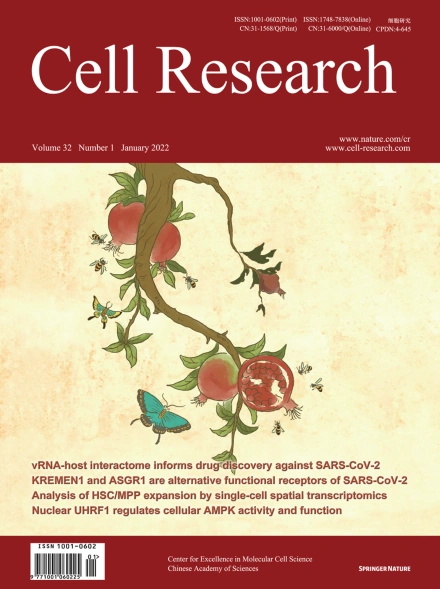
Advanced Search
Submit Manuscript
Advanced Search
Submit Manuscript
Volume 32, No 1, Jan 2022
ISSN: 1001-0602
EISSN: 1748-7838 2018
impact factor 17.848*
(Clarivate Analytics, 2019)
Volume 32 Issue 1, January 2022: 9-23 |
Comparison of viral RNA–host protein interactomes across pathogenic RNA viruses informs rapid antiviral drug discovery for SARS-CoV-2
Shaojun Zhang1,† , Wenze Huang1,† , Lili Ren2,3,† , Xiaohui Ju4,† , Mingli Gong4,† , Jian Rao2,3,† , Lei Sun1 , Pan Li1 , Qiang Ding4,* , Jianwei Wang2,3,* , Qiangfeng Cliff Zhang1,*
1MOE Key Laboratory of Bioinformatics, Beijing Advanced Innovation Center for Structural Biology & Frontier Research Center for Biological Structure, Center for Synthetic and Systems Biology, Tsinghua-Peking Joint Center for Life Sciences, School of Life Sciences, Tsinghua University, Beijing, ChinaIn contrast to the extensive research about viral protein–host protein interactions that has revealed major insights about how RNA viruses engage with host cells during infection, few studies have examined interactions between host factors and viral RNAs (vRNAs). Here, we profiled vRNA–host protein interactomes for three RNA virus pathogens (SARS-CoV-2, Zika, and Ebola viruses) using ChIRP-MS. Comparative interactome analyses discovered both common and virus-specific host responses and vRNA-associated proteins that variously promote or restrict viral infection. In particular, SARS-CoV-2 binds and hijacks the host factor IGF2BP1 to stabilize vRNA and augment viral translation. Our interactome-informed drug repurposing efforts identified several FDA-approved drugs (e.g., Cepharanthine) as broad-spectrum antivirals in cells and hACE2 transgenic mice. A co-treatment comprising Cepharanthine and Trifluoperazine was highly potent against the newly emerged SARS-CoV-2 B.1.351 variant. Thus, our study illustrates the scientific and medical discovery utility of adopting a comparative vRNA–host protein interactome perspective.
https://doi.org/10.1038/s41422-021-00581-y